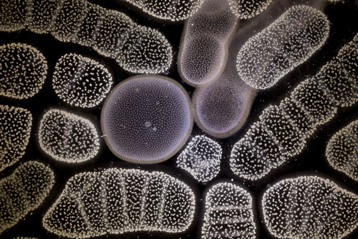In situ imaging reveals the biomass of giant protists in the global ocean
T. Biard1,2, L. Stemmann2, M. Picheral2, N. Mayot2, P. Vandromme3, H. Hausse3, G. Gorsky2, L. Guidi2, R. Kiko3, and F. Not1
- Sorbonne Universités, UPMC Univ Paris 06, INSU-CNRS, Laboratoire d’Océanographie de Villefranche, 181 Chemin du Lazaret, 06230 Villefranche-sur-mer, France
- Sorbonne Universités, UPMC Univ Paris 06, INSU-CNRS, Laboratoire Adaptation et Diversité en Milieu Marin, Station Biologique de Roscoff, 29688 Roscoff, France
- GEOMAR Helmholtz Centre for Ocean Research Kiel, Wischhofstrasse 1–3, 24148 Kiel, Germany
Download Article on ResearchGate
Although invisible to the naked eye, marine plankton play a key role in the balance of our planet. Still largely unexplored, they consist of an astonishingly wide variety of tiny organisms that produce half the Earth’s oxygen and form the base of the oceanic food web that feeds fish and marine mammals. Rhizarians, from their Latin name Rhizaria, are a group of large planktonic organisms whose importance had been overlooked until now. Most estimates of the distribution of marine organisms are performed locally (in a defined marine area) and are based on collection with plankton nets. However carefully carried out, this operation can damage certain fragile organisms such as rhizarians, preventing their identification.
In this study, an in situ imaging system, which involved no collection, was used to study the organisms directly in their environment without damaging them and with an unprecedented geographical coverage. We reveal that the high rank lineage Rhizaria, made up by the well-known fossil contributor Radiolaria, Foraminifera, and Phaeodaria, contributes on average to 5% of total oceanic biota carbon reservoir. More specifically, in vast oligotrophic inter-tropical open oceans, rhizarian biomass is estimated to be equivalent to that of global meso-zooplankton. Our finding sets a paradigm change in biological oceanography by unveiling the amazingly high contribution of overlooked taxa to global carbon standing stock.

Photo credit: Christian Sardet, Observatoire océanologique de Villefranche (CNRS/UPMC)
